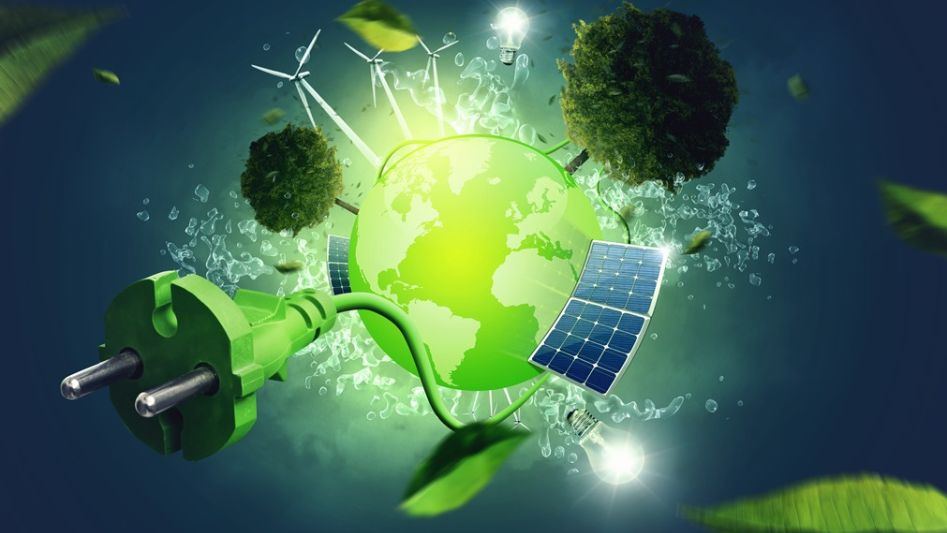Renewable energy has become a hot topic in recent years as the world seeks to reduce its carbon footprint and transition to cleaner sources of energy. In this article, we will take a closer look at the economics of renewable energy and explore how it can be a viable option for the future.
Table of Contents

The Basics of Renewable Energy
Renewable energy refers to energy sources that are replenished naturally, such as solar, wind, geothermal, hydro, and biomass. Unlike non-renewable sources such as coal, oil, and gas, renewable energy sources are not finite and will never run out. Renewable energy sources are also much cleaner and produce fewer greenhouse gas emissions than non-renewable sources.
The Cost of Renewable Energy
One of the biggest concerns surrounding renewable energy is its cost. In the past, renewable energy was often more expensive than non-renewable energy sources. However, the cost of renewable energy has decreased significantly in recent years, making it more competitive with non-renewable sources.
This decrease in cost is due to a combination of factors, including technological advancements, economies of scale, and government subsidies. For example, the cost of solar panels has dropped by more than 80% in the past decade, making it one of the most affordable sources of renewable energy.
The Benefits of Renewable Energy
Environmental Impact
Renewable energy sources produce fewer greenhouse gas emissions and pollutants than non-renewable sources, reducing the impact on the environment and mitigating the effects of climate change.
Job Creation
Renewable energy industries create jobs in installation, maintenance, and manufacturing. This can stimulate economic growth and help to transition from fossil fuel industries.
Energy Security
Renewable energy sources are much less vulnerable to supply disruptions and price spikes than non-renewable sources, providing more energy security.
Energy Access
Renewable energy can provide electricity to remote areas that are not connected to the grid, improving energy access and reducing poverty.
Cost Reduction
Advancements in technology, economies of scale, and government subsidies have reduced the cost of renewable energy, making it more competitive with non-renewable sources.

The Challenges of Renewable Energy
Intermittency
Renewable energy sources like solar and wind are not available 24/7 and depend on weather conditions, requiring backup power sources or energy storage solutions to ensure a constant supply of energy.
Upfront Cost
The initial cost of building renewable energy infrastructure can be high, making it difficult for smaller organizations or developing countries to invest in renewable energy.
Land Use
Renewable energy infrastructure, such as wind turbines and solar panels, requires large amounts of land, potentially impacting ecosystems and wildlife habitats.
Energy Storage
Energy storage solutions are necessary for renewable energy to be available on demand, but the cost of storage technology is still relatively high, and it requires further development.
Grid Integration
Integrating renewable energy into the grid is challenging due to the variability and unpredictability of renewable energy sources. This requires upgrading the existing infrastructure and managing energy demand.

Conclusion
Renewable energy has the potential to revolutionize the way we produce and consume energy. While there are challenges to its adoption, the cost of renewable energy has decreased significantly in recent years, and its benefits are numerous. As we seek to transition to a more sustainable energy system, renewable energy will play a critical role in creating a cleaner, more stable, and more equitable energy future.
FAQ
How does government policy impact the economics of renewable energy?
Government policies, such as subsidies and tax incentives, can make renewable energy more financially viable and accelerate its adoption. Conversely, the lack of supportive policies can impede the growth of renewable energy industries.
Is renewable energy cost-competitive with non-renewable sources?
Advancements in technology and economies of scale have made renewable energy more cost-competitive with non-renewable sources. While the upfront cost of building renewable energy infrastructure can be high, the long-term cost is often lower than non-renewable sources.
How does renewable energy impact energy security?
Renewable energy sources are less vulnerable to supply disruptions and price spikes than non-renewable sources, providing more energy security.
What role do energy storage solutions play in the economics of renewable energy?
Energy storage solutions, such as batteries and pumped hydro storage, are necessary for renewable energy to be available on demand. The cost of storage technology is still relatively high, but advancements in technology and economies of scale are making it more cost-competitive.
You May Also Like
- THE BENEFITS OF INVESTING IN RENEWABLE ENERGY
- RENEWABLE ENERGY: THE KEY TO A LOW-CARBON FUTURE
- THE LESSONS OF NUCLEAR POWER FOR THE FUTURE OF RENEWABLE ENERGY
- POWER PER POUND: COMPARING THE ENERGY DENSITY OF RENEWABLE AND NON-RENEWABLE ENERGY SOURCES
- REWIND TO THE FUTURE: HOW CLASSIC MOVIES IMAGINED A WORLD POWERED BY RENEWABLE ENERGY
